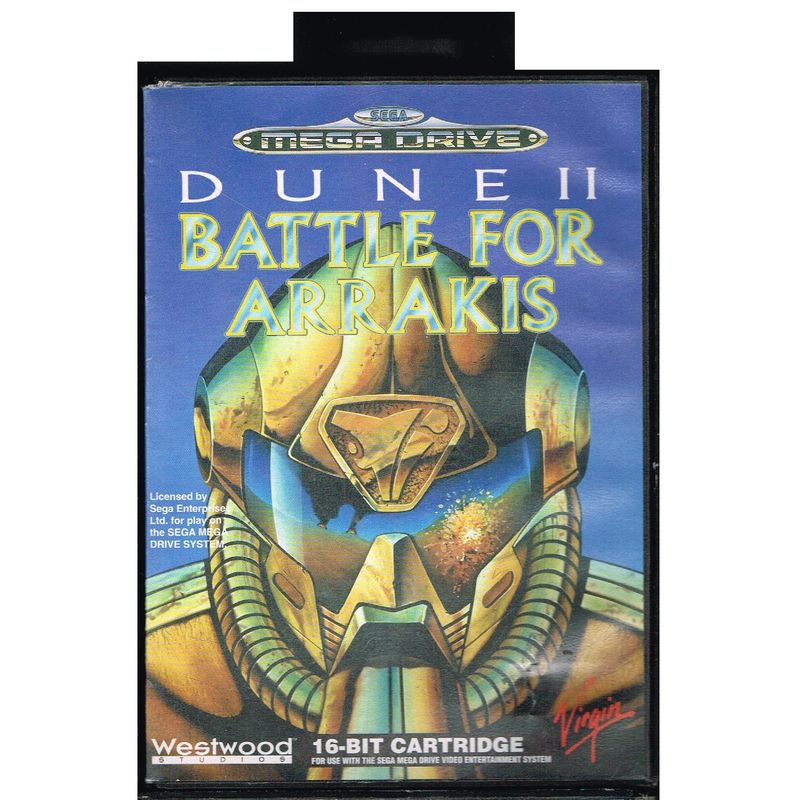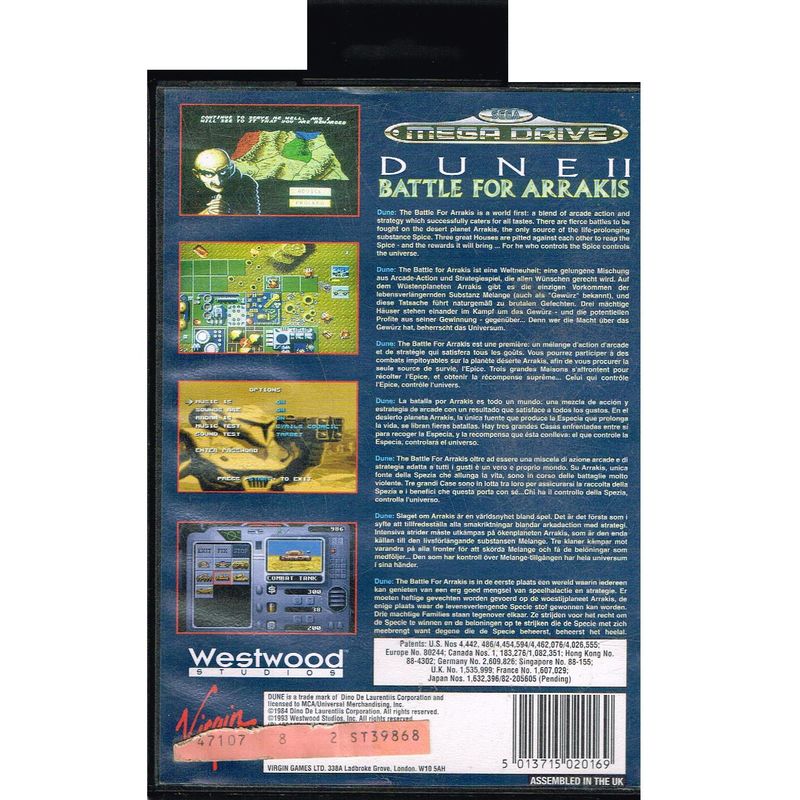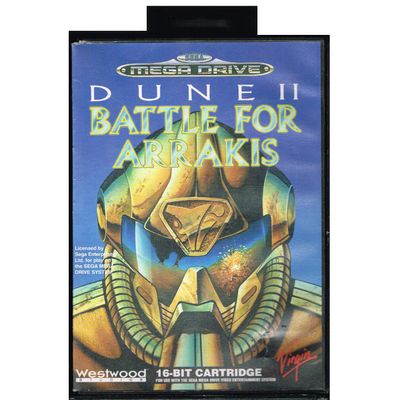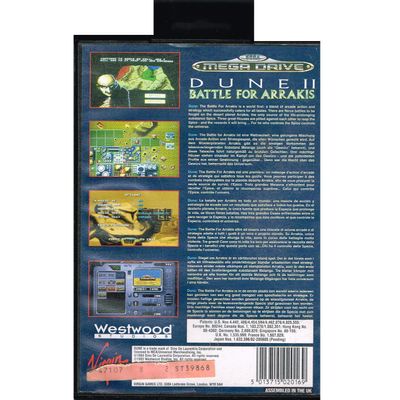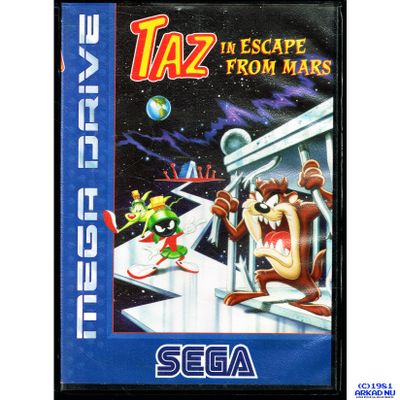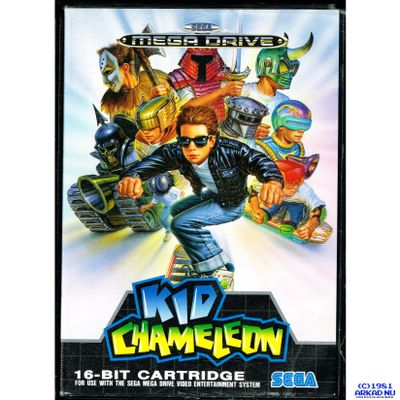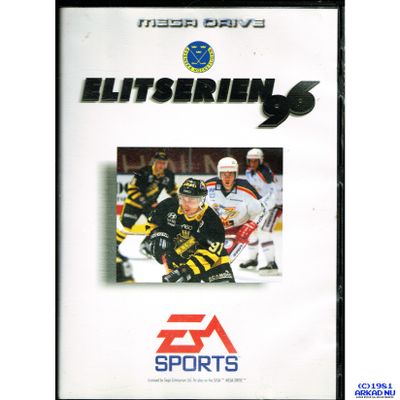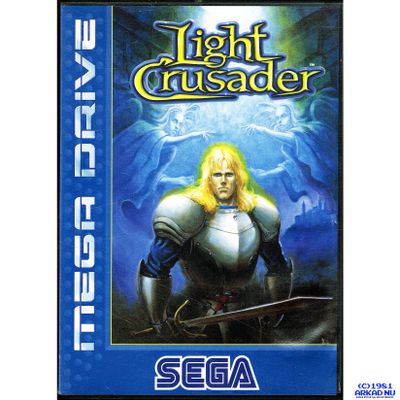DUNE II BATTLE FOR ARRAKIS MEGA DRIVE
Liknande produkter
Beskrivning av DUNE II BATTLE FOR ARRAKIS MEGA DRIVE
DUNE II BATTLE FOR ARRAKIS MEGA DRIVE - T-70246-50
Dune II: The Building of a Dynasty (titled Dune II: Battle for Arrakis in Europe and Dune: The Battle for Arrakis for the Mega Drive/Genesis port respectively) is a real-time strategy Dune video game developed by Westwood Studios and released by Virgin Games in December 1992. It is based upon David Lynch's 1984 movie Dune, an adaptation of Frank Herbert's science fiction novel of the same name.
While not necessarily the first real-time strategy (RTS) video game, Dune II established the format that would be followed for years to come. As such, Dune II is the archetypal "real-time strategy" game. Striking a balance between complexity and innovation, it was a huge success and laid the foundation for Command & Conquer, Warcraft, StarCraft, and many other RTS games that followed.
Emperor Frederick IV of House Corrino is desperate for the harvesting of the valuable drug melange (also known as "the spice"), found only on the planet Arrakis, to pay off all of his debt incurred on internecine wars with family members. To achieve this, he now offers the sole governorship of Arrakis to whichever of the three Houses (Atreides, Harkonnen, and Ordos) delivers the most spice for him. War begins as deputations from all three Houses arrive on Arrakis.
The player is a military commander from a House of their choice. In the first few missions the objectives are to establish successfully a base on an unoccupied territory of Arrakis, to harvest spice, and to defeat intruders. Later, when the three Houses divide Arrakis among them, the player has to assault and capture enemy territories. When the player dominates Arrakis on the world map, the two other enemy factions ally against their common enemy. The ultimate final showdown is the battle between the player's House against three enemy sides, among them Frederick's forces the Sardaukar (an unplayable elite force whose heavy infantry are particularly powerful). The introductory, mission briefing and endgame cutscenes are different for each House, in keeping with their very disparate world views. The weaponry and units also vary from house to house.
The player takes the role of the commander of one of the three interplanetary houses, the Atreides, the Harkonnen or the Ordos, with the objective of wresting control of Arrakis from the other two houses. House Ordos is not featured in the Dune novels and is mentioned only in the non-canon Dune Encyclopedia. The basic strategy in the game is to harvest spice from the treacherous sand dunes using a harvester vehicle, convert the spice into credits via a refinery and to build military units with these acquired credits in order to fend off and destroy the enemy.
The game map initially starts with a fog of war covering all area which is not covered by the player's units range of view. As the units explore the map, the darkness is removed. Unlike later games such as Warcraft II: Tides of Darkness, the fog of war is lifted forever with initial exploration, it does not become dark once more when units leave the area.
In addition to enemy incursions, there are other dangers; like the marauding gigantic sandworm, capable of swallowing vehicles and infantry whole but blocked by rocky terrain. The player can only build on rocky terrain, but must build concrete foundations before to avoid deterioration of the structures due to the harsh weather conditions although in general, structures will gradually decay over time regardless of the presence of those concrete slabs due to the aforementioned weather conditions, though the concrete saves repair costs in the long run. Spice fields are indicated by orange coloration on the sand, darker orange indicating high concentration. Some spice may be concealed as bumps on the terrain (a "spice bloom") that become spice fields when they are shot at, or when a unit runs over them (the unit is destroyed in the ensuing "spice blow").
The player is presented a map of the planet Arrakis before most missions, where they can choose the next territory to play in among two or three. This affects primarily the enemy house fought in the next mission, as all missions except the first two require the complete destruction of the enemy. Nine territories must be fought, irrespective of house, to reach the endgame.
The Dune II interface was the template for subsequent RTS designs
Some key elements that first appeared in Dune II and later appear in many other RTS games include:
A world map from which the next mission is chosen
Resource-gathering to fund unit construction
Simple base and unit construction
Building construction dependencies (technology tree)
Mobile units that can be deployed as buildings
Different sides/factions (the Houses), each with unique unit-types and super weapons
A context-sensitive mouse cursor to issue commands (introduced in the Mega Drive/Genesis version)
Completing higher missions gives authorization to use improved technology and higher-order weaponry unique to each House, ensuring varied game play. For example, House Harkonnen may be able to construct their Devastator tanks with heavy armor and ordnance but cannot build the similarly impressive Atreides Sonic Tank. The Ordos have access to the Deviator - a specialized tank firing a nerve gas that switches the allegiance of targeted units to Ordos for a limited period of time. The three Houses also are restricted in their production capabilities—House Ordos cannot build Atreides-style trikes, instead making the faster "Raider" trikes, while House Harkonnen constructs heavier but more expensive quad bikes.
A player can gain access to other Houses' special units by capturing an enemy Factory and manufacturing the desired units at the captured Factory (House Atreides' Heavy Vehicle Factory for Sonic Tank, House Ordos' Light Vehicle Factory for Raider trikes, House Ordos' Heavy Vehicle Factory for Deviator tanks, or House Harkonnen's Heavy Vehicle Factory for Devastator tanks). Note that a Deviator not owned by House Ordos still switches control of targeted units to House Ordos, and not to the side that owns the Deviator. Apparently Westwood was aware of this feature, since capturing a Sardaukar Heavy Vehicle Factory allows the player to build both the Sonic Tank and Devastator, but not the Ordos Deviator.
Buildings may only be built in rocky zones and connected to another existing building. To protect them from constant wear, the player must first place concrete slabs in the construction areas. Production buildings can be upgraded at a cost several times, allowing the production of more advanced units or buildings.
The final prize for the commander is the building of the House Palace from where superweapons may be unleashed on opponents in the final closing chapters of the game. The House Harkonnen superweapon is a long-range powerful but inaccurate finger of missiles called the Death Hand, whereas House Atreides may call upon the local Fremen infantry warriors, over which the player has no control, to engage enemy targets. House Ordos may unleash a fast-moving Saboteur whose main purpose is the destruction of buildings.
The AI of Dune II was one of the first used in RTS games, and while better than that of Herzog Zwei, it has various drawbacks. Examples include only attacking the side of the player's base facing its own, general inability to perform flanking maneuvers, and not rebuilding defenses. Recent research into the game's engine by fans revealed that the AI is in fact capable of more advanced strategy, but that a large part of these capabilities is unused due to consistently repeated errors in all of the game's mission scripts
KOMPLETT I BOX

